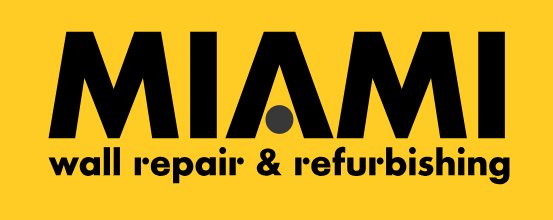Step-by-Step Guide to Repairing Water-Damaged Drywall in Miami Apartments
Water damage is one of the most common issues affecting drywall in Miami apartments. The combination of high humidity, tropical storms, and aging plumbing systems makes water-damaged drywall a frequent concern for Miami residents. If left untreated, water-damaged drywall can lead to mold growth, structural deterioration, and costly repairs.
In this comprehensive guide, we'll walk you through the step-by-step process of repairing water-damaged drywall in your Miami apartment, helping you restore your walls and prevent future damage.
## Understanding Water Damage in Miami Apartments
Miami's subtropical climate creates unique challenges for apartment dwellers. Heavy rainfall, hurricanes, and high humidity levels can cause water to seep into walls through windows, roofs, or faulty plumbing. Common signs of water-damaged drywall include:
- Discoloration or staining on walls or ceilings
- Soft or spongy texture when pressed
- Bubbling or peeling paint
- Musty odors indicating mold growth
- Visible mold or mildew
## Step 1: Identify the Source of Water Damage
Before repairing water-damaged drywall, it's crucial to identify and fix the source of the water intrusion. Common causes in Miami apartments include:
- Leaking pipes or plumbing fixtures
- Air conditioning condensation issues
- Window or door seal failures during storms
- Roof leaks
- High humidity and poor ventilation
If you're unable to locate the source, consider hiring a professional to conduct a thorough inspection.
## Step 2: Assess the Extent of the Damage
Determine whether the damage is minor (surface-level staining) or severe (structural compromise). Minor damage may only require drying and painting, while severe damage necessitates complete drywall replacement.
For Miami apartments, it's particularly important to check for mold growth, which can develop within 24-48 hours in our humid climate.
## Step 3: Gather Your Materials and Tools
For a successful drywall repair, you'll need:
- Safety equipment (gloves, mask, safety glasses)
- Drywall saw or utility knife
- Replacement drywall sheets
- Joint compound (mud)
- Drywall tape
- Sandpaper (120-grit and 220-grit)
- Primer and paint
- Putty knife
- Dehumidifier or fans
- Mold-killing solution (if needed)
## Step 4: Remove Damaged Drywall
Once you've identified the damaged area:
1. Turn off electricity to the affected area for safety
2. Protect surrounding areas with plastic sheeting
3. Use a drywall saw to cut out the damaged section, creating a square or rectangular opening
4. Remove all wet or damaged drywall material
5. Inspect the wall cavity for mold, insulation damage, or structural issues
6. Allow the area to dry completely using fans or a dehumidifier (critical in Miami's humid environment)
## Step 5: Treat for Mold and Moisture
In Miami's climate, mold prevention is essential:
1. Apply a mold-killing solution to all exposed surfaces
2. Ensure complete drying before proceeding (use a moisture meter if available)
3. Replace any wet insulation
4. Consider using mold-resistant drywall for repairs
## Step 6: Install New Drywall
1. Measure the opening and cut a new drywall piece to fit
2. If there are no studs to attach to, install backing boards or a California patch
3. Secure the new drywall with drywall screws
4. Ensure the new piece is flush with the surrounding wall
## Step 7: Tape and Mud the Seams
1. Apply joint compound along the seams
2. Press drywall tape into the compound
3. Apply a thin coat of compound over the tape
4. Allow to dry completely (may take longer in humid Miami weather)
5. Apply additional coats, feathering the edges to blend with the existing wall
6. Sand smooth between coats
## Step 8: Prime and Paint
1. Apply a stain-blocking primer to prevent water stains from bleeding through
2. Once the primer dries, paint the repaired area to match the existing wall
3. You may need multiple coats for complete coverage
## When to Call a Professional
While minor repairs can be DIY projects, consider hiring a professional Miami drywall contractor if:
- The damage covers a large area
- There's extensive mold growth
- Structural damage is present
- You're dealing with asbestos (common in older Miami buildings)
- The damage recurs frequently
- You lack the tools or experience
## Preventing Future Water Damage
To protect your Miami apartment from future water damage:
- Regularly inspect plumbing and fixtures
- Maintain your air conditioning system to prevent condensation
- Use dehumidifiers in humid areas
- Ensure proper ventilation in bathrooms and kitchens
- Seal windows and doors before storm season
- Address leaks immediately
- Consider installing moisture sensors
## Conclusion
Repairing water-damaged drywall in Miami apartments requires prompt action, proper technique, and attention to mold prevention. While minor repairs can be handled as DIY projects, significant damage often requires professional expertise to ensure proper restoration and prevent recurring issues.
For expert water damage drywall repairs in Miami, call Miami Wall Repair at (305) 699-3538.

